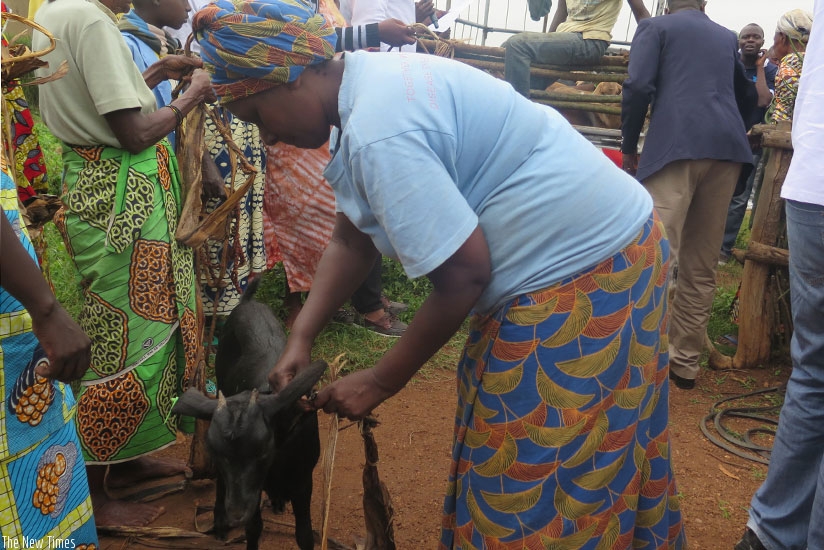Domitille Mukarubuga, an elderly woman from Bugesera District, is a survivor of the 1994 Genocide against the Tutsi. Like many, she has a harrowing tale of the slaughter and how she miraculously survived.


Domitille Mukarubuga, an elderly woman from Bugesera District, is a survivor of the 1994 Genocide against the Tutsi. Like many, she has a harrowing tale of the slaughter and how she miraculously survived.
At the height of the Genocide, Mukarubuga with her two little granddaughters, was cornered. The militia had attacked her village hill in Ntarama Sector, from all corners, killing, burning houses, raping and looting.
Together with the toddlers, one on the back and the other straddled on her neck, Mukarubuga, now 83, virtually had no escape route.
"We could not cross to the nearby village because the militia had attacked from all sides of our village and the only open route was heading into River Nyabarongo, I decided to head in that direction,” said Mukarubuga.
She says that, as they were wading through the river, with no destination in mind, suddenly, water currents struck and threw her and the little kids on the banks.
"That happened when we were practically drowning, but somehow God saved us through ways I still don’t understand,” she says.
Yet that was not the end, the killers were all along lurking and were waiting to pounce.
"Before I could even gain my consciousness, the Interahamwe found me and my granddaughters, by that time many people had been discovered hiding in the marshland on the banks of the river; hundreds were thrown into the river alive as we watched before they started hacking us,” she narrated.
The interahamwe would later leave Mukarubuga for the dead after smashing against a rock. She bled profusely. "Miraculously my two grand children survived this.”
That’s the same place where the mother of her two granddaughters and many others were killed, she says.
That is the kind of brutality that thousands of Tutsi families in Bugesera District were subjected to in 1994, with very few surviving to tell the tale.
In memory of the tens of thousands of the people who were either drowned in Nyabarongo or hacked to death on its banks, authorities have set up a memorial site on the river banks.
‘Ray of hope’
Mukarubuga is one of the 22 widows who currently reside in Nyamata Sector who were on Thursday given goats (two each) by the employees Business Development Fund (BDF). The employees visited the area to express solidarity with Genocide survivors as Rwandans continue to mark 21 years since the beginning of the 100-day killings that claimed at least a million lives.
"It gives us hope every time we receive people who are ready to listen to our stories and offer whatever support they can provide.
"I am happy for the two goats I have been given and I am sure they will help change my life and that of my two granddaughters; they still live with me,” Mukarubuga said.
"For us such a gesture is a reassurance that we have people who care about us, it represents a ray of hope.”
Donatha Mukakigeli, another Genocide widow, welcomed the support saying that she had previously been given a goat but it had died a month earlier.
The donation is worth over Rwf1 million.
John Rutagengwa, a representative of BDF, told his colleagues and others present that before thinking of supporting the survivors, it was more important to understand the country’s history and how it culminated into the Genocide.
He said that in a bid to give more sustainable support to survivors, the Fund had introduced an initiative where they encourage the survivors to organise themselves into groups and then help them design business plans for eventual funding.


